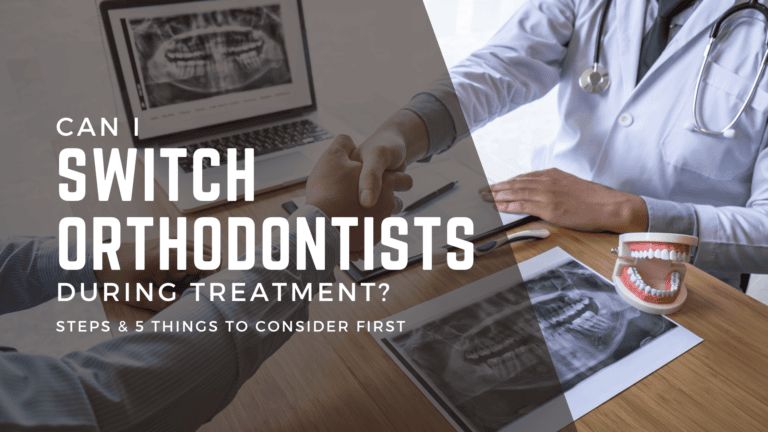Understanding Orthodontic Insurance: Essential Insights about Policies, Maximums, & More!
Navigating the world of orthodontic insurance can be challenging for many families. Here are some valuable insights on how orthodontic insurance works, what to look for in a policy, and answers to common questions. Whether you’re considering braces for yourself or your child, understanding these elements can help you make informed decisions.
Introduction to Orthodontic Insurance
Orthodontic insurance can often feel like a tangled web of terms and conditions. It’s essential to grasp its fundamental aspects to navigate the process effectively. Understanding your orthodontic insurance involves knowing what benefits are available, how they apply to your treatment, and what costs you may incur. This section will provide a comprehensive overview to help demystify orthodontic insurance.
What Insurances Do We Accept?
Colorado orthodontists typically work with various insurance carriers to make orthodontic treatment more accessible. We accept a broad range of insurance providers, with the exception of Medicare, Medicaid/Health First Colorado, TennCare, and DHMO policies. The most common insurances include:
- Blue Cross Blue Shield
- Delta Dental
- MetLife
- Cigna
It’s important to note that we do not file medical claims for orthodontic treatment. Understanding which insurances we accept can help streamline your experience and ensure that you maximize your benefits.
Understanding Lifetime Maximums
One critical aspect of orthodontic insurance is the lifetime maximum. This is the total amount that your insurance will pay towards orthodontic treatment over the course of your lifetime. Many policies have a lifetime maximum ranging from one thousand to two thousand dollars per individual. This amount can significantly affect your out-of-pocket expenses.
It’s vital to understand that not every dental insurance policy includes orthodontic coverage. Often, these details are buried in the fine print. If your policy does include coverage, remember that the lifetime maximum is a one-time benefit for each individual. Therefore, if your child has multiple treatments, the lifetime maximum will not renew for subsequent phases.

Shopping for the Right Policy
When searching for the right orthodontic insurance policy, it’s crucial to ensure that it includes orthodontic benefits. Here are some key factors to consider:
- Orthodontic Benefit: Confirm that the policy explicitly covers orthodontic treatment.
- Age Limits: Many policies have age-specific limits for coverage, often set at 18, 19, or 26 years old.
- Waiting Period: Policies may include a waiting period, typically one year, before orthodontic benefits can be used.
- Coverage for Treatment in Progress: If you are already undergoing treatment, check if the new policy covers it.
Being proactive in understanding these components can save you from unexpected costs down the line.
The Line Item Estimate Explained
It’s essential to understand that the line item for orthodontic coverage on your treatment contract is merely an estimate of what the insurance company will pay. This figure is not a guarantee. In some cases, the insurance company may not pay the quoted benefit, leaving you responsible for the difference. Always review your contract carefully and ask questions if anything is unclear.
Insurance companies can be unpredictable, and the amount listed may change based on various factors. Knowing that this line item is an estimate helps set realistic expectations for your financial responsibility.
How Insurance is Filed and Paid Out
The process of filing insurance differs between orthodontic and medical offices. For orthodontics, an initial claim is filed once at the beginning of treatment. Typically, the insurance company will cover a percentage of the cost upfront, usually between 20% and 25%. The remaining balance is then paid out over time, either monthly, quarterly, or annually.
Maintaining your policy throughout treatment is crucial to receiving the full benefits. If your insurance changes during treatment, it’s essential to notify our office immediately, as this can impact your account balance.
What Happens If There Are Changes to Insurance
Life is unpredictable, and insurance changes can happen. Ideally, you should maintain your current policy for the duration of treatment. However, if your coverage changes, it’s vital to inform us right away. A new policy might offer different benefits, and this can affect your overall treatment costs.
For example, if you switch from a plan that covers $3,000 to one that only covers $1,000, you will be responsible for the remaining balance. Understanding how changes in insurance affect your treatment can help you plan accordingly.
Handling Double Coverage
Many families have double insurance coverage, often due to both parents working. If this applies to you, it’s crucial to let us know as soon as possible. We will need to determine which insurance is primary and which is secondary, as this impacts how benefits are paid out.
The secondary insurance typically does not begin to pay until the primary insurance has exhausted its benefits. Thoroughly understanding your coverage can help maximize your benefits and minimize out-of-pocket expenses.
Changing Insurance During Treatment
Changing your insurance during orthodontic treatment can have significant implications. It’s crucial to notify our office immediately if your insurance changes. This allows us to assess how the new policy will affect your treatment costs while continuing the process of clear aligners or braces.
For instance, if you switch from a plan that covers a substantial amount, such as $3,000, to one that only covers $1,000, you will be responsible for the remaining balance. Understanding the specifics of your new policy is essential to avoid unexpected costs.
We recommend reviewing your new policy thoroughly and discussing it with our team. We can help you understand what benefits you will receive and how they compare to your previous coverage.
Double Coverage Considerations
Double coverage can be beneficial, especially in families where both parents have insurance. This situation often leads to questions about how benefits are coordinated. It’s essential to inform us if you have dual coverage so we can determine the primary and secondary insurances.
The primary insurance typically pays first, and the secondary insurance may cover additional costs. However, the secondary policy often does not begin paying until the primary policy has exhausted its benefits. This coordination can maximize your benefits and reduce out-of-pocket expenses.
We will work with you to understand the specifics of each policy and how they interact, ensuring you get the most out of your coverage.
Are Retainers Covered by Insurance?
Retainers are generally covered by insurance as part of your comprehensive orthodontic treatment. This coverage typically applies only to the initial retainer provided at the end of your treatment. However, replacements due to loss or damage are often not covered under most insurance plans.
If you need to replace a retainer due to common issues—like wear and tear or accidental loss—you can use Flexible Spending Account (FSA) or Health Savings Account (HSA) funds to cover the costs. This applies to other appliances as well, such as space maintainers.
Understanding the specifics of your policy regarding retainers can help you plan for any future expenses related to your orthodontic care.
Conclusion and Resources
In conclusion, navigating orthodontic insurance can be complex, but understanding your coverage options can significantly ease the process. From changing insurance during treatment to considerations for double coverage and retainer costs, being informed is key.
We encourage you to reach out with any questions you may have regarding your insurance coverage. Our team is dedicated to helping you understand your benefits and ensuring you receive the best possible care.
Frequently Asked Questions
1. What happens if I change jobs during treatment?
If you change jobs and your insurance changes, inform our office immediately. We’ll assess how the new policy affects your treatment and ensure you understand your financial responsibilities.
2. Can I use both my insurances for orthodontic treatment?
Yes, if you have double coverage, both insurances can be used, but coordination is necessary. We will help determine which insurance is primary and how benefits will be applied.
3. Are there limits on orthodontic coverage?
Yes, most policies have limits, including lifetime maximums and age restrictions. Always review your policy details to understand these limitations.
4. What if I need additional treatment after the initial coverage?
Additional treatment may not be fully covered if the lifetime maximum has already been used. It’s crucial to discuss potential future needs with our team to plan accordingly.
5. How can I maximize my orthodontic insurance benefits?
To maximize your benefits, keep your insurance active during treatment, understand your policy’s specifics, and communicate any changes to our office promptly. We’re here to assist you in navigating your coverage effectively.





